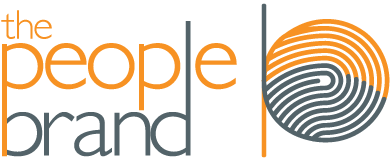The Gap by any other name…
Could this be the same retailer that dominated the ’90s with its basic, casual attire? Well, yeah. It was just a little too easy for competitors like Target and Costco to replicate (and discount) button-down shirts and blue jeans. The Gap’s first response was to try to jazz up its designs, but apparently only managed “to bore a lot of customers.” So, now the Gap is turning its attentions to its stores, and perhaps taking its cues from Starbucks.
This is an excerpt from Reveries Magazine’s article The Gap as Starbucks.
Apparently the Gap is making efforts to improve the customer experience at their stores. The efforts consist of staining their wood floors a darker and richer color, using softer spot lights instead of harsh fluorescents, colorful murals on walls, and a greater emphasis on employee training (how novel).
The effort is to be commended, but is the strategy to be encouraged?
its influences were collected via a photojournal created by Christopher Hufnagel, the Gap’s “vp of brand store experience” and a team of 20, who traveled the world “to go see what everyone else was doing and really experience a lot of different customer experiences — and not just retail.
That’s great, but what I would like to know is what it has to do with the Gap. Lately, I’ve been reading Douglas Rushkoff’s book Get Back in the Box. I hate referencing the book right now because I’m only about 3 chapters into it, but it has already given me plenty to ponder. A term I’ve read repeatedly in the book is “core competency.” Rushkoff continually drums home the point that too many companies have been caught up in the latest marketing fads and business crazes that they simply lose their identity and forget their core competency.
So, what is the Gap’s core competency?
From Gap’s own website:
Gap is about fresh, casual American style.
Since 1969, Gap has provided customers with clothing and accessories that enhance personal style while providing great value and service. With a focus on assortments for going to work, going out and the weekend, Gap offers a range of options from fashion apparel and accessories, to wardrobe staples such as denim, khakis and T-shirts for men and women. What began as one brand has grown to include Gap, GapKids, babyGap and GapBody.
By providing great style, value and service, Gap has become one of the world’s most recognized brands.
Fresh, casual American style. But, as you can see from this Business Week article covering the Gap’s spinoff brand, Forth and Towne, there’s a problem with that.
“You can get great-designed clothes at Target if you want,” says Gary Muto, president of the company’s new brand, called Forth & Towne.
And back to the Reveries’ article, this is the really scary quote for me concerning the Gap’s rebranding efforts:
… analyst Lauren Cooks Levitan suggests it can’t hurt: “A good store environment can’t overwhelm a weak product, but it can enhance decent product,”
Is that what the Gap is about? A “decent” product? I sure hope not, for their sake.
I don’t have all the answers. Honestly, I don’t know the Gap’s core competency. I don’t shop there. Maybe there are readers out there who can help out. What is the Gap’s core competency? A “Starbucks” customer experience? Fresh, casual American style?
Maybe they need to know it themselves.
